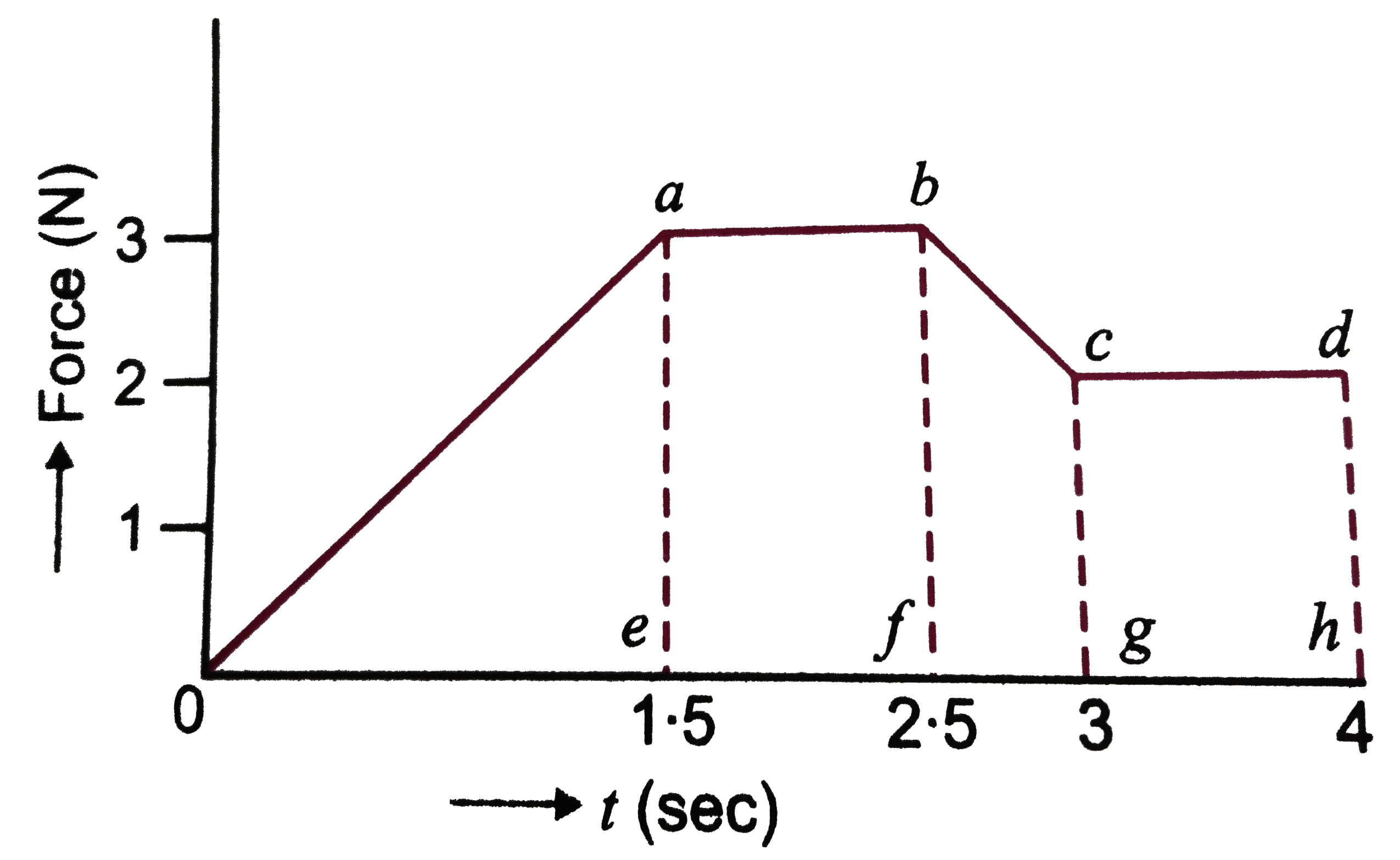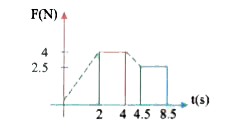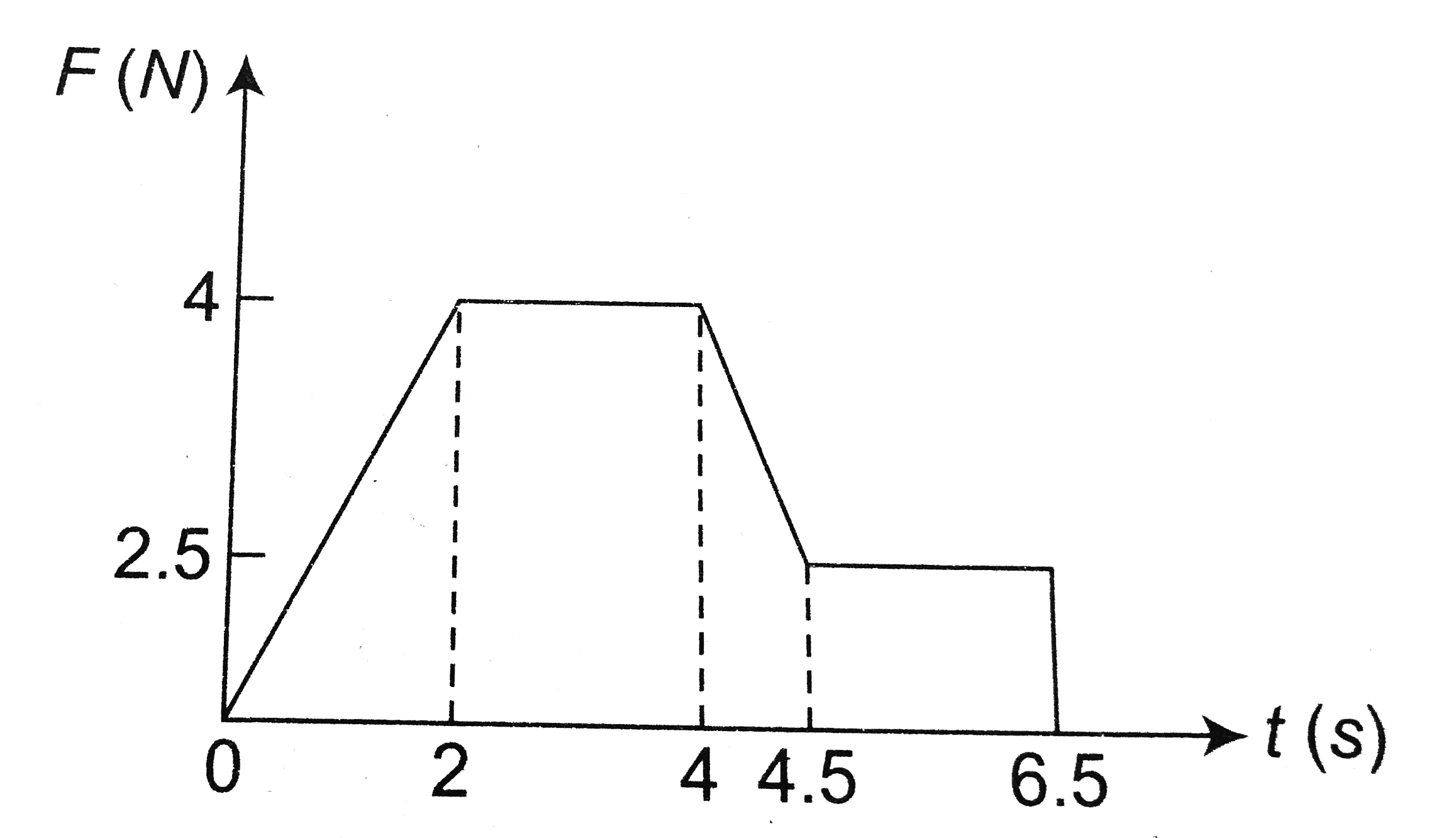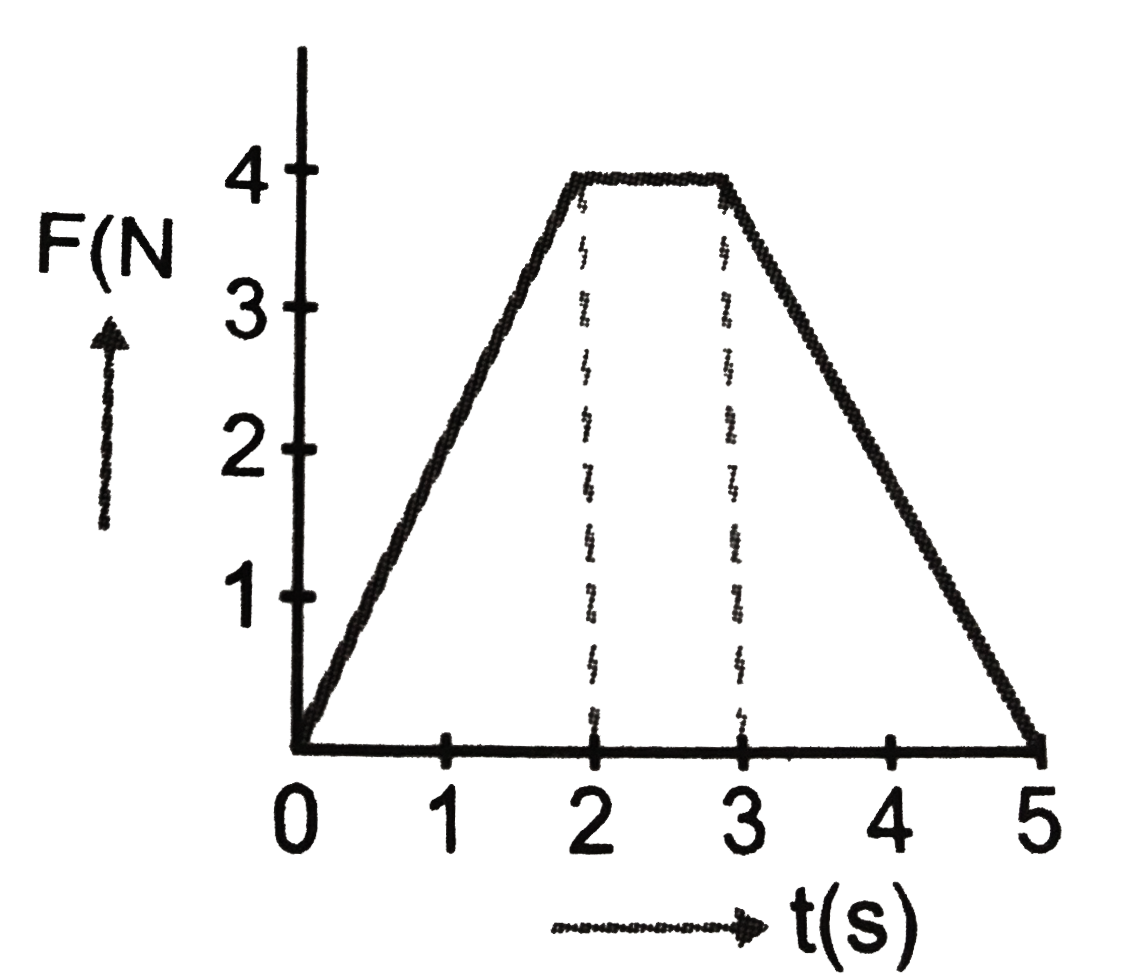The initial speed of a body of mass 2.0 kg is 5.0 m/s. A force acts for 4 s in the direction of motion of the body. The force-time graph is shown in Calculate the impulse of the force and the final speed of the body.

Impuse of the force
=area between the force-time graph and time axis
= area of triangle OAA. + area of rectangle
AA.B.B + area of trapezium BB.C.C + area of rectangle CC.D.D
=12×1.5×3+1×3+12(3+2)(3−2.5)+2×1
2.25 + 3 + 1.25 + 2 = 8.5 N⋅ s
∴ Impulse = change in momentum = mΔv
∴ Change in velocity, Δv=impulsemass
= 8.52 = 4.25 m⋅s−1
Final speed of the body = initial speed + Δv
=(5.0+4.25)=9.25m⋅s−1
Topper's Solved these Questions
- BOOK - CHHAYA PUBLICATIONCHAPTER - NEWTON'S LAWS OF MOTIONEXERCISE - SECTION RELATED QUESTION10videos
NEWTON'S LAWS OF MOTION
- BOOK - CHHAYA PUBLICATIONCHAPTER - NEWTON'S LAWS OF MOTIONEXERCISE - HIGHER ORDER THINKING SKILL (HOYS) QUESTIONS26videos
NEWTON'S LAWS OF MOTION
- BOOK - CHHAYA PUBLICATIONCHAPTER - NATURE OF VIBRATIONEXERCISE - EXERCISE (CBSE SCANNER)2videos
NATURE OF VIBRATION
- BOOK - CHHAYA PUBLICATIONCHAPTER - NEWTONIAN GRAVITATION AND PLANETARY MOTIONEXERCISE - CBSE SCANNER19videos
NEWTONIAN GRAVITATION AND PLANETARY MOTION
Similar Questions
The initial speed of a body of mass 2kg is 5ms−1 A force acts for 4 seconds in the direction of motion of the body. The force time graph is shown in Calculate impulse of the force and also find the speed of the body .
 .View Solution
.View SolutionA body of mas 2kg has an initial speed 5ms−1 A force acts on it for some time in the direction of motion The force-time graph is shown. Find the final speed of the body
 .View Solution
.View Solution
Knowledge Check
- Question 1 - Select One
A body of mass 2kg has an initial speed 5ms−1. A force acts on it for 8.5 seconds in the direction of motion. The force time graph is shown in figure. The final speed of the body is
 A8.5ms−1B11ms−1C16.8125ms−1D4.31ms−1
A8.5ms−1B11ms−1C16.8125ms−1D4.31ms−1 - Question 2 - Select One
A body of 2kg has an initial speed 5ms−1 . A force acts on it for some time in the direction of motion. The force time graph is shown in figure. The force time graph is shown in figure. The final speed of the body is
 A9.25ms_(−1)B5ms_(−1)C14.25ms_(−1)D4.25ms_(−1)
A9.25ms_(−1)B5ms_(−1)C14.25ms_(−1)D4.25ms_(−1) - Question 3 - Select One
The momentum of a body of mass 8 kg is 20 kg m/s. A force of 12 N acts on the body in the direction of motion for 4 s, the increase in the kinetic energy is
A398 JB264 JC113 JD75.5 J
A force acting on a body of mass 2 kg varies with time as shown in fig . 20 find impulse of the force and final velocity of the body.
 View Solution
View SolutionA variable force acts on a body of mass 2 kg initially at rest as shown in figure . Calculate the impulse of the force in first 2 seconds and speed of the body after 2 seconds .
 View Solution
View SolutionA variable force acts on a body of mass 2 kg intially at rest as shown in figure . Calculate the impulse of the force in first 2 seconds and speed of the body after 2 seconds .
 View Solution
View SolutionThe speed time graph of a body of mass 300g is shown in (fugure). Calculate the force actiong on the body.
 View Solution
View SolutionA body of mass5kg is moving with a momentum of 10kgm/s. A force of 0.2N acts on it in the direction of motion of the body for 10sec. The increase in its kinetic energy.
View Solution
